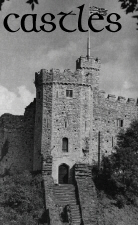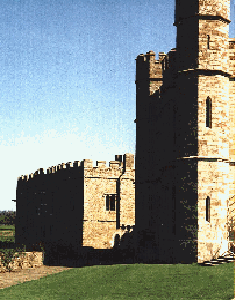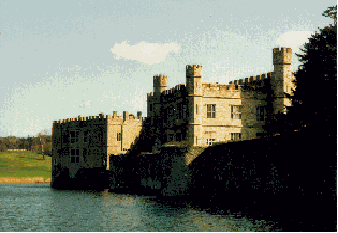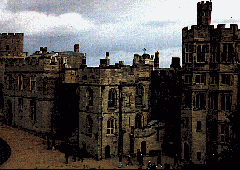|
|
Probably no other symbol captures the Middle Ages more than the castle. Existing castles, some almost 1,000 years old, are visual reminders of a past when warfare was common and there was a need for such an immense and enduring fortification. Not only were castles built as a point from which nobles could dominate the local countryside or town, but they were also the living quarters for the owners.
|
||||
|
Before there were castles in Europe, there were other types of defences used by those outside of Europe which were quite impressive in their own right. Pre-Roman fortifications were usually of huge earthenworks of large ditches and embankments created by manual labor with primitive tools. These would usually have some type of fort on the top of a hill in the center. Some of these date back to 2000 B.C., such as Maiden Castle in Dorset, England. |
|||||
|
The Romans tended to build walls around towns as a defensive measure. They did not create huge, fixed fortifications as a rule because they sought a military philosophy of speed and mobility. Many of their early walled towns were later used in some degree by Medieval castle builders as sites for a castle because of their existing materials or location. The Saxons also built walled towns called "burghs" which were for the defense of the community. It was not until the eleventh century that actual castles came into being in Europe, primarily due to the Normans. The Normans combined their warlike Scandinavian ancestry with excellent |
|
||||
|
administrative abilities to begin constructing early versions of castles. Their first attempts produced the motte and bailey castle (pictured below). These consisted of a large earthen mound, the motte, surrounded by a ditch often filled with water or spikes. On top of the motte was a one or two storey tower, called a donjon, usually made of wood with a wooden palisade around the edge. Surrounding the water or spike filled ditch was a larger palisaded area called the bailey which was enclosed by a wall and maybe another ditch. These simple wooden structures were the predecessors of the later immense stone structures we usually associate with as being a castle.
|
|||||
|
|
|||||
|
These early castles, and most any castle for that matter, were primarily used as a means to to dominate the surrounding areas, not particularly for cowering within. William the Conquerer built several of these castles when he invaded and conquered England in 1066. Though castles were private fortifications, the owners always had to have royal permission to build them |
|||||
|
The twelfth century was a time of tremendous growth and improvement in castle building. As crusaders returned from the Holy Land, they brought back techniques learned from their Muslim enemies and counterparts from Byzantium and applied them to their castle construction. The crusaders also built castles in the Holy Land in such places as Jerusalem, Tyre, and Antioch. Crusaders learned the value of sighting a castle and of stone materials as opposed to wooden. They also experimented with various designs such as concentric and square castles. Siege warfare, also enhanced by the crusaders, further enforced the need to switch from wood to stone castles. |
|||||
|
After the twelfth century, most of the new designs in castle building had already taken place. New castles did not show such a significant development as the earlier ones had. Instead, they often became more hospitable for the residents since they were becoming more for personal living rather than military purposes. Castles were still being built for another 700-800 years after the castle improvements of the twelfth century. They stopped being built after the introduction of gunpowder which rendered the castle as a defensive stronghold obsolete.
|
|||||
|
|
|||||





